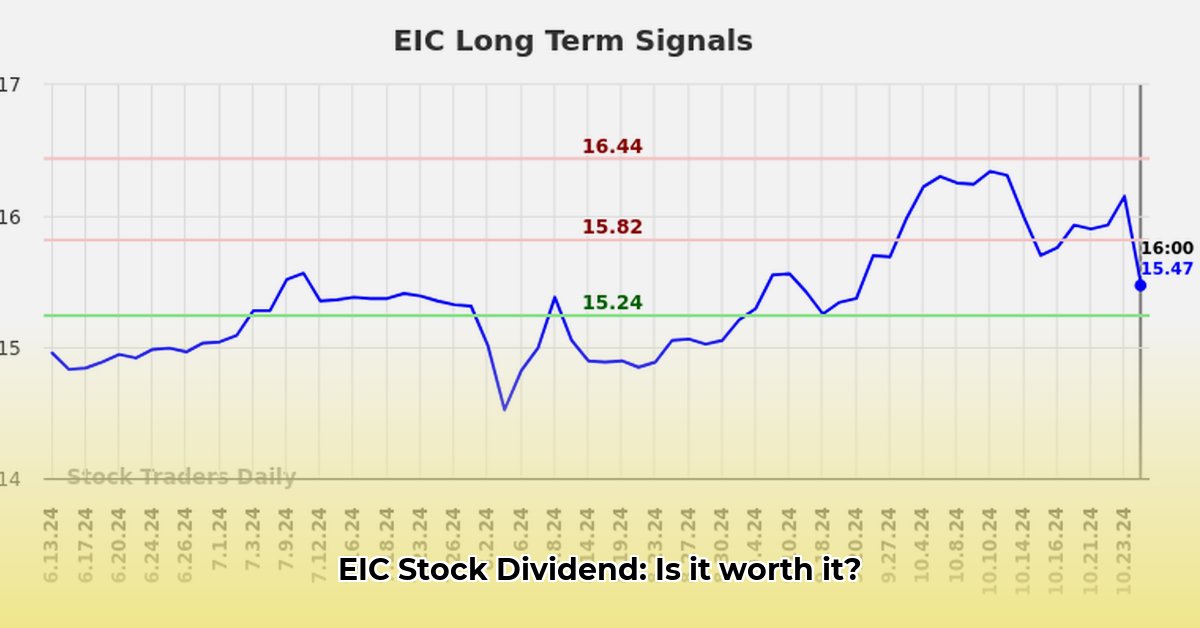
EIC's Dividend History: A Five-Year Retrospective
Understanding EIC's dividend policy requires a thorough examination of its historical payouts. The following analysis considers the past five years, assessing consistency, growth trends, and any significant deviations. (A visual representation, such as a line graph depicting annual dividend payments, would further enhance this analysis.) Did consistent dividend growth accompany periods of strong earnings, or were there instances where dividends remained stable despite fluctuating profitability? Such nuances illuminate EIC's approach to shareholder returns and management’s priorities. This is a fundamental aspect of evaluating the long-term sustainability of its dividend policy. For further dividend data analysis, see this helpful resource.
Financial Ratio Analysis: Gauging Financial Health
A deeper understanding of EIC's financial health is crucial for evaluating dividend sustainability. Key financial ratios provide vital insights into the company's capacity to maintain its dividend payments.
Payout Ratio: The payout ratio (the percentage of earnings distributed as dividends) indicates the proportion of profits returned to shareholders. A high payout ratio, while attractive to income-focused investors, could signal reduced reinvestment in growth and increased vulnerability to economic downturns. Conversely, a low payout ratio might suggest the company prioritizes internal growth over immediate shareholder returns. (Investopedia provides a detailed explanation: https://www.investopedia.com/terms/d/dividendpayoutratio.asp)
Debt-to-Equity Ratio: This ratio reveals the proportion of EIC's financing derived from debt versus equity. A high debt-to-equity ratio suggests higher financial risk, potentially impacting the company's ability to sustain dividend payments during periods of financial stress. Lower levels indicate greater financial stability and a stronger foundation for consistent dividends.
Free Cash Flow (FCF): FCF, the cash generated after covering operating expenses and capital expenditures, represents the company’s ability to fund dividends without compromising operational efficiency or future investment. A robust and consistently growing free cash flow is a crucial indicator of long-term dividend sustainability. Conversely, a declining or insufficient FCF raises questions about the long-term viability of dividend payments.
These ratios, analyzed in conjunction with EIC's historical financial statements, provide a comprehensive picture of their financial health and its relevance to dividend policy. How does the current level of FCF compare to the total dividend paid over the last five years? This direct comparison highlights the company's ability to sustain its dividend payouts.
Industry Comparison: Benchmarking EIC's Dividend Policy
Benchmarking EIC against its competitors within the same industry provides valuable context for assessing its dividend policy. How does EIC's dividend yield compare to industry peers? (Data from reputable financial databases would be necessary for a meaningful comparison.) Is EIC's payout ratio more conservative or aggressive than that of its competitors? Is its dividend growth rate in line with industry norms? Comparing these key metrics allows investors to assess whether EIC's approach is typical, exceptionally prudent, or potentially risky compared to its peers. Does a seemingly high yield signal an undervalued stock, or does it instead reflect a higher level of perceived risk?
Risk Assessment: Identifying Potential Threats
Several factors could jeopardize EIC's future dividend payments:
Economic Downturns: Recessions or significant economic slowdowns directly impact corporate profitability and can force companies to cut or suspend dividends to preserve capital.
Increased Competition: Intensified competition can erode market share and reduce profitability, thereby potentially reducing the ability to maintain or increase dividend payouts.
Regulatory Changes: New regulations, whether industry-specific or broader economic policies, could increase operating costs or alter the business environment, negatively impacting profitability and dividend payments.
A risk matrix (as mentioned in the draft article) would effectively summarize the likelihood and potential impact of these risks. (A completed matrix with appropriate scoring would provide a valuable visual aid here.) This quantitative approach helps investors understand the potential threats to EIC's dividend policy and incorporate those risks into their investment decisions.
Investment Implications: Actionable Insights
The analysis of EIC's dividend history, financial health, industry position, and potential risks provides investors with actionable insights:
For Current Shareholders: The analysis helps determine whether EIC's dividend policy aligns with their long-term investment objectives. Do the prospects for continued dividends and capital appreciation justify continued holdings or is a change of strategy warranted?
For Potential Investors: This information assists in evaluating EIC's attractiveness as an investment, balancing the potential dividend yield with the assessed risks. Is the dividend yield sufficiently attractive to offset the identified risks?
For Management: A transparent and well-defined dividend policy improves communication with stakeholders and helps manage expectations. Regularly reviewing and adjusting dividend policies based on financial performance and future prospects is crucial for maintaining investor confidence.
Conclusion: Evaluating EIC's Dividend Sustainability
This analysis provides a comprehensive evaluation of EIC's dividend policy. While historical data and financial ratios suggest a certain level of sustainability, the potential impacts of economic downturns, increased competition, and regulatory changes cannot be ignored. Investors should carefully weigh the potential rewards of EIC's dividend yield against the identified risks. This analysis is for informational purposes only and does not constitute financial advice. Consult with a qualified financial advisor before making any investment decisions.